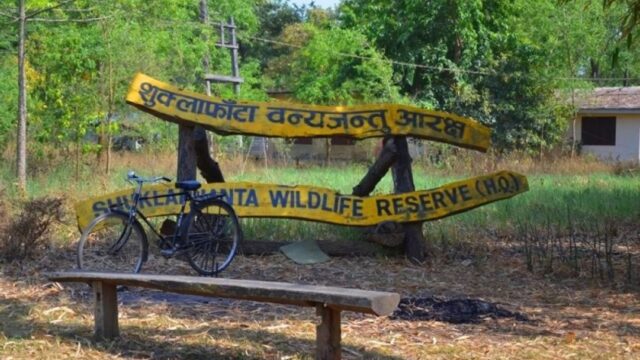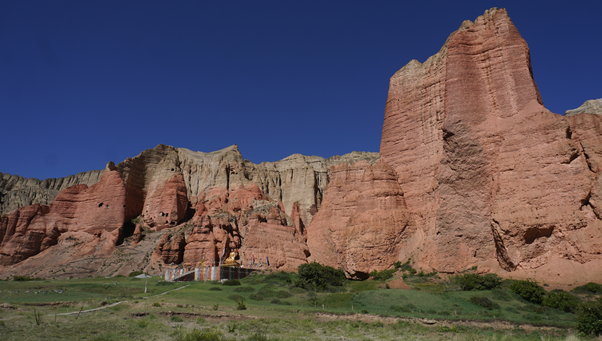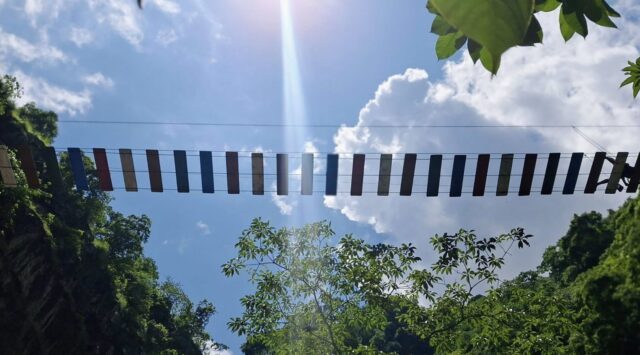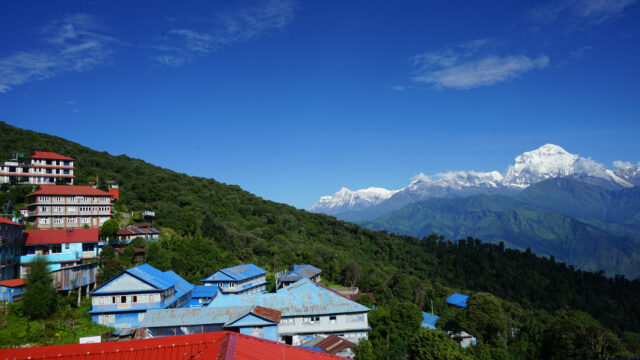The climbing season for Mount Annapurna has officially begun, with mountaineers, guides, Sherpas, and tourists arriving at the base camp. Standing at an impressive 8,091 meters, Annapurna is the tenth-highest mountain in the world, and its base camp is located in Nar-Chyang, Annapurna Rural Municipality-4, Myagdi.
According to Shyam Purja, a ward member of Annapurna Rural Municipality-4, the base camp is bustling with activity. “The climbing teams have set up their tents, transforming the base camp into a small village. Along with the climbers, both domestic and international tourists have also started to arrive,” he stated. Situated at an altitude of 4,100 meters above sea level, the base camp attracts adventure seekers, mountaineers, and trekkers alike.
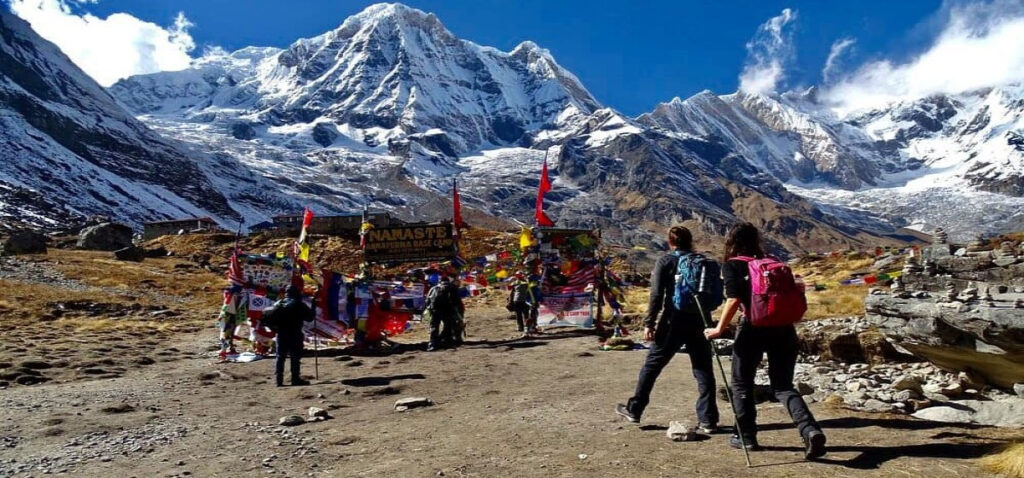
Increased Interest in Annapurna Climbing
Recent statistics from the Department of Tourism reveal that five groups, comprising 30 male and 12 female climbers, have obtained permits for Annapurna climbing this spring. Among the 58 climbers who secured permits for five different peaks, the highest number chose Annapurna. Director Aarti Nyaupane of the Department of Tourism confirmed this growing interest.
The expedition teams arriving at the base camp represent various international agencies, including Pioneer Adventure, 8K Expedition, Imagine Nepal, Seven Summit Treks, 14 Peaks Expedition, Makalu Adventure, and Bochibochi Peaks. Mountaineers from different countries are now preparing for their ascent.

Annapurna: A Historic Climbing Destination
Recognized as the first 8,000-meter peak ever summited, Annapurna holds a special place in mountaineering history. The French climber Maurice Herzog first reached its summit in 1950. This remarkable achievement occurred three years before Sir Edmund Hillary and Tenzing Norgay Sherpa successfully conquered Mount Everest in 1953. Since then, only 488 climbers have successfully reached the top of Annapurna, as reported by the Department of Tourism.
Given its historical significance, Annapurna is often referred to as the “Elder Peak.” The trail used by Herzog during his expedition has been identified and developed into the Maurice Herzog Trekking Route, which connects Nar-Chyang to the base camp. This route, first mapped in 2010 under the leadership of local guide Tej Gurung, has now become popular among trekkers due to its scenic beauty and adventure appeal.
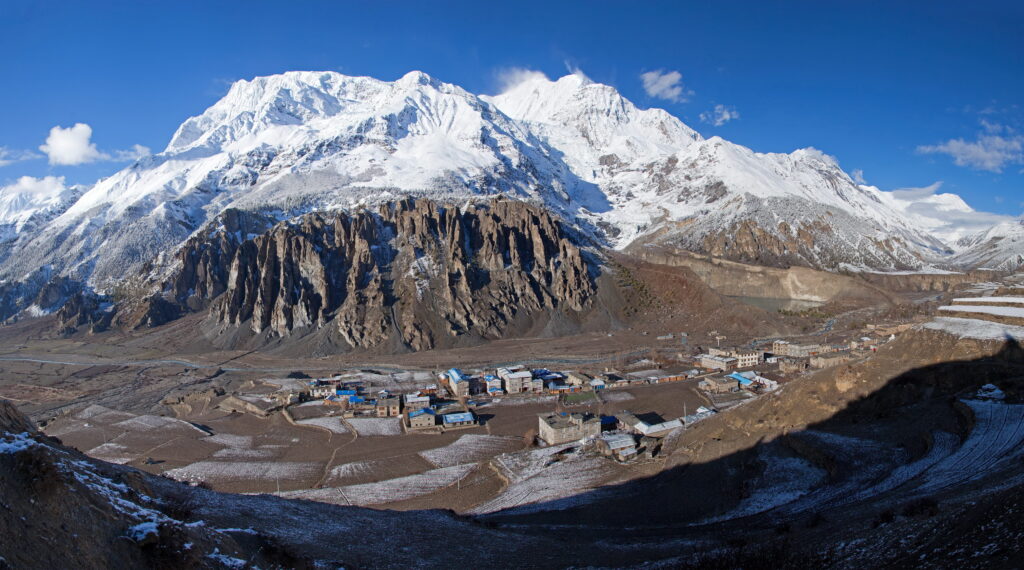
Improved Facilities at the Base Camp
With increasing footfall, facilities at the base camp have improved significantly. According to Tej Gurung, this season, porters have carried supplies to the base camp, reducing the dependency on helicopters. “Last year, both climbers and their equipment were flown in by helicopter. This time, while climbers still use helicopters, porters have transported the supplies,” he explained. This shift has helped reduce costs for climbers while creating employment opportunities for local workers.
To enhance tourist convenience, temporary camps and tented shelters have been set up along the route. Basic amenities, including food stalls and tea houses, are available at strategic points such as Futfute Waterfall, Sadhikharka, Gufa Phat, Bhusket, and Panchakundatal near the base camp. This development has made the journey more comfortable and appealing for trekkers and mountaineers.
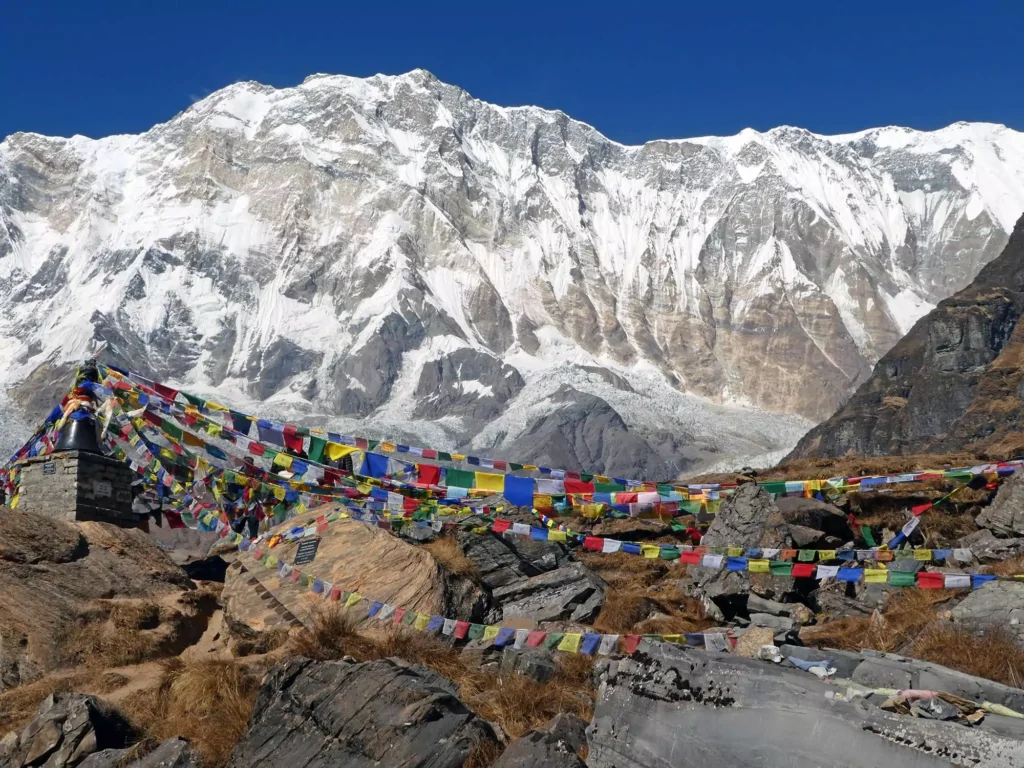
Despite these improvements, concerns have been raised about the standardization of service charges at these temporary facilities. Journalist Ganesh Gurung, who recently returned from the base camp, emphasized the need for regulated pricing to ensure fairness for tourists.
The Annapurna Base Camp Trek: A Scenic Adventure
The trek to Annapurna Base Camp is a visual delight, offering breathtaking views of towering waterfalls, unique landscapes, rare flora and fauna, and spectacular mountain ranges. The journey follows the banks of the Mistri River, passing through dense forests and deep gorges. The striking blue Panchakundatal, nestled at the foot of Annapurna, remains one of the trek’s key attractions.
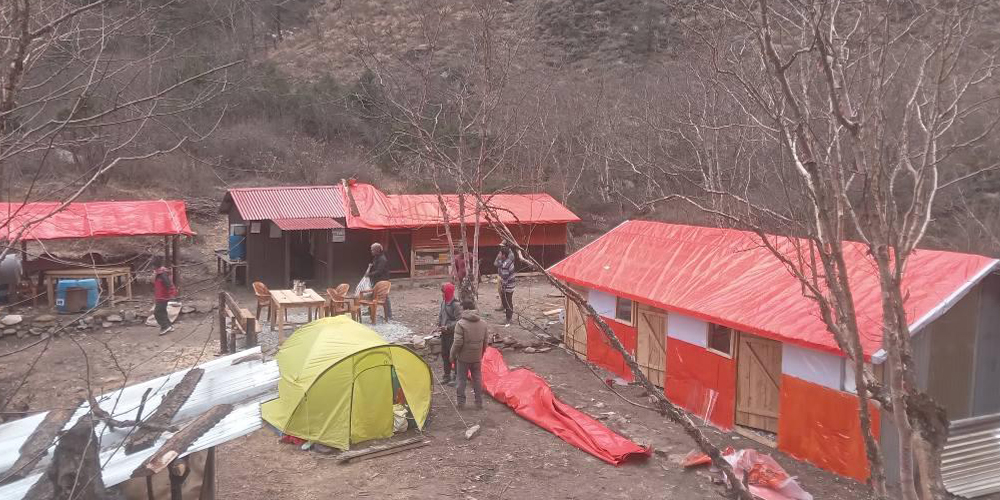
The base camp is accessible via a two-hour drive from Nar-Chyang to Humkhola, followed by a two-day trek to the base camp. Many trekkers complete the round trip in three days, making it an ideal short trekking destination. The serene and secluded environment, combined with the natural beauty, makes Annapurna Base Camp a top choice for adventure enthusiasts.
As the climbing season progresses, the increased interest in Annapurna is expected to boost tourism in the region, further strengthening Nepal’s reputation as a premier mountaineering and trekking destination.

